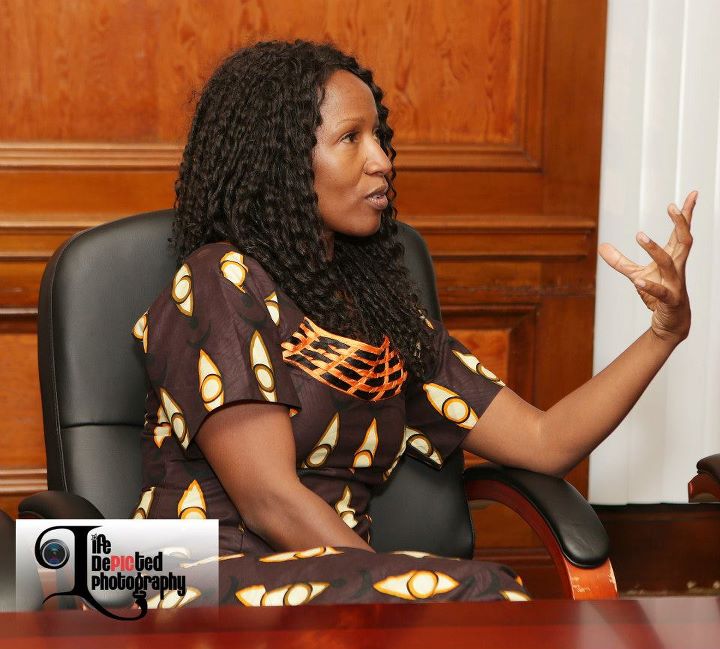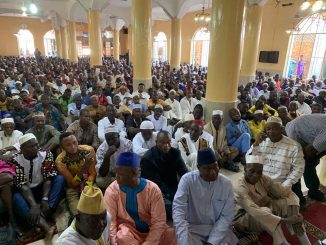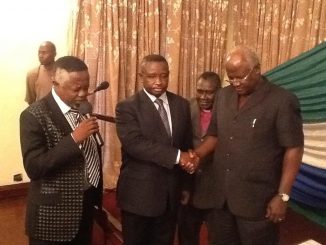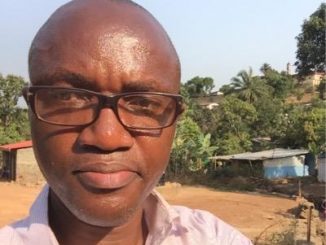
The International Day of Zero Tolerance to FGM, a day sponsored by the UN was first observed on February 6, 2003 to create awareness of female genital mutilation (FGM) and to promote its eradication. Though, the United Nations and other international organizations characterize FGM as nothing more than child abuse, supporters of female genital surgeries reject the “term mutilation” and see anti-FGM campaigns as an affront to their basic human rights to equality, dignity and self determination.
Fuambai Sia Ahmadu is a Sierra Leonean medical anthropologist based in Washington, DC who describes herself as a third wave feminist activist. I caught up with Dr. Ahmadu recently to share her thoughts and perspectives on the observation of International Day of Zero Tolerance to FGM, the re-launch of her SIA Magazine and African Woman Are Free to Choose (AWA-FC).
This is a transcript of some of what she said during the interview.
This is the anniversary of our first interview last year on Feb 6th, International Zero-Tolerance to Female Genital Mutilation Day. The interview in Newstime Africa online publication, received widespread attention almost overnight. Clearly, some people are listening. What have you been doing since?
Dennis, it is good that people are listening. Especially on a day like today when it appears we have capitulated to the definition of African women’s bodies as “mutilated”. As descendants of Africans with our history of enslavement, imperialism and colonialism, we have to be very careful when we are shamed into forgetting or denigrating our culture, our past, and our traditions. By labeling circumcised African women as “mutilated” and “oppressed” and our cultures as “barbaric” – some feminists even say “sadomasochistic” – the financiers of anti-FGM campaigns who are largely white, educated, middle-class or wealthy women and men continue to define for us who we can and cannot be as African women, how we can or cannot feel, what we can or cannot do, and what we can or cannot appreciate about our histories, our bodies and our own sexual organs.
Our interview was published just after my appearance on SBS-TV, Insight Program, in Australia. The show was appropriately called, “Breaking the Taboo”. This was perhaps the first time that western audiences got to hear a more balanced view of African female genital surgeries. It was the first time I “came out” so to speak in a public way to engage with others about my own experience and my support of what we call Bondo in Sierra Leone. I spent the first half of the year giving talks at universities, academic seminars and conferences. It is amazing how receptive normal, reasonable and liberal thinking people are when they hear my story and the perspective of millions of African women and girls who continue to celebrate what we call female circumcision.
The second half of the year I spent quietly, writing and editing several manuscripts for publication this year. I have worked with other women to re-launch SiA Magazine and African Women Are Free to Choose (AWA-FC). SiA Magazine began in 2009 as a light, Afropolitan women’s fashion, entertainment quarterly aimed mainly at Sierra Leonean women in the diaspora. But the new magazine is more serious, African third wave feminism for circumcised women who support their tradition. AWA-FC is a budding grassroots global movement I co-founded to raise awareness among circumcised African girls and women about the denigrating psychosexual impact of anti-FGM campaigns and blatant infringements on our basic human rights and constitutional rights in the countries in which we reside. My close female relatives joke that I am not a feminist but a Bondo activist. Indeed, for me Bondo is and has always been radical, grassroots African feminist activism – long before western women awakened to a consciousness of their own oppression.
You have mentioned quite a few things here that I’m sure people want to know more about – especially many westerners or even other Africans who are from ethnic groups that do not practice female genital modifications. Many of us are familiar with your work and your open support for female circumcision and want to be as objective as possible in understanding and representing your views. What is Bondo exactly?
Well first, Bondo refers to the various traditional women’s associations (many use the misnomer “secret societies”) in Sierra Leone that manage female initiation, which includes but cannot be reduced to customary female genital surgeries. Bondo also refers to the entire process of this transition to womanhood, the powerful masquerade owned by the women, as well as the physical operation itself. The parallel for males is Poro. Poro is responsible for traditional male initiation and also includes men’s masquerades and customary male genital surgeries or male circumcision. Female and male circumcision are considered complementary and interdependent. Part of the task of SiA Magazine and AWA-FC is to begin the necessary weeding out or sifting through those external meanings that have been imported, imposed and incorporated into the traditional meanings – not just by western feminists and anti-FGM activists over the last 40 years but by the harbingers of Abrahamic religions (that is, Judaism, Christianity and Islam).
So, why the name SiA Magazine? I know it’s your name as well but is there another reason why you decided on the name SiA?
The name for the initial African women’s lifestyle magazine was Sierra Afrique. My business partner, also a Sierra Leonean, thought it would be kind of cool to add an “i” in the middle that would stand for “international” but would also signify my name, the name of Sierra Leone’s First Lady and thousands of other women in the country. Sia is commonly known as the name of the first born girl among the Kono (and some Kissy) in the east of Sierra Leone. Saa is the name of the first born boy. So, the name also symbolizes maternal responsibility (and Saa would signify paternal responsibility). This female/male gender balance and attention to the hierarchical position of the first born represents for me the core of gender roles in many African societies and explains why our feminism differ at times from western feminism – often to the dismay of our transatlantic sisters.
But I found out only two years ago, through what seemed like a bizarre coincidence, that Sia/Saa was also the name of the “firstborn” female/male in Egyptian or Memphite theology. And here’s the part that really threw me – Sia/Saa was created by the Supreme God from the blood of his/her own circumcision! This Memphite religion is literally written in stone, the Shabaka Stone, which completes the name of the magazine – SiA and The Shabaka Stone.
The Shabaka Stone predates the writing of Genesis and the Torah and points to a credible origin of the most important symbolic act in Abrahamic religions – circumcision. Although male circumcision is not a requirement under Christianity, unlike with Judaism and Islam, the symbolism of the blood of circumcision as Christ himself, remains very important.
More important for African descendants Dennis, the creation of the firstborn, Sia/Saa, through the blood of divine circumcision points to a probable origin of both female and male circumcision among Mande peoples, which include the Kono, perhaps hundreds if not thousands of years before the Nubian kings took over all of Egypt.
One thing that western feminists need to understand is that the original ideology that supports these practices among peoples of Mande or Nubian descent is profoundly matriarchal and not patriarchal, in contrast with the Abrahamic traditions. SiA magazine was created in part to make this hidden knowledge available and accessible to modern day women and men from ethnic groups that practice both female and male circumcision as complementary experiences.
With the global anti-FGM movement showing no signs of backing down in what they say is a war against the “mutilation” of girls and women and against Gender Based Violence in general, what do you really hope to accomplish with this new magazine and the grassroots movement?
SiA Magazine is a reclaiming of this hidden part of our history as Africans. There is a dirty word that is used to deter educated, liberal, westernized African descendants like you and me from inquiring into our histories and especially questioning the unnerving parallels between western civilization, the Abrahamic faiths and that of the ancient Egyptians or Nubians – “Afrocentrism”. We don’t want to be labeled Afrocentrics – a term that discredited many fine historians, sociologists and anthropologists in the early 70s and 80s – so, our generation of intellectuals don’t go there. A few of us may sneak into the Nubian boutique at the local mall, look over our shoulders to make sure no one sees us, lower our heads and walk quickly past the burning incense and mini ornaments of black pharaohs, to the shelves at the back where we can find books by Cheikh Anta Diop, Walter Rodney, Franz Fanon etc. We read these things in private, shake our heads in private, knowing that we have much too much at stake to really rock the boat of our comfortable modern lives or grand aspirations to Oprah-like success in corporate America.
My hope is that SiA Magazine will help some of us get over ourselves and who we think we are in today’s global economy. Hello, remember we have a black President in America. We have a black First Lady holding court in the big White House. Not only that, the President is of direct African descent. Like my dad and the dads of many other first generation Americans, Obama’s dad immigrated to the US from Africa. Like my dad and the dads of other Africans I know, papa Obama came as an African scholar and was enrolled at a prominent university, with the intention – whatever his personal character flaws – of returning to his homeland to develop the country during the early years of African Independence.
We are the beneficiaries of the sacrifices made by these audacious African men and women but we have somehow lost the spirit of independence of the 50s, 60s and early 70s. We have abandoned the revolution – we apologize and compromise for UN jobs, government posts and contracts, high-powered consultancies, cushiony faculty appointments, we collude and connive to become award winning journalists, best-selling authors and Nobel Prize laureates – we agree to the “mutilation” of our African spirit.
SiA Magazine is for me and I hope for others like me, the voice of that spirit that says it is okay to be African. We give permission to ourselves to celebrate ourselves, our mothers and fathers, grandmothers and grandfathers, our culture and our traditions. Yes, we can wear our hair natural – for those who do – and sport African couture while rocking boardrooms on Wall Street, winning Nobel Prizes, Oscar awards, or making millions in the hip-hop industry. All that is good and well and I say bravo to those who show that we can be as “modern”, “global”, chic, and successful as our Euro American and Black American counterparts.
But, and I say this especially to my Bondo sisters in the diaspora, it is also okay to be African by our own standards, to enjoy our kinfolk back home, to take part in the grand masquerades and yes, to dance in our initiation ceremonies. That is what I believe third wave feminism is all about – defining for ourselves who we are and choose to be. And, for those of us women and men who are descended from early Mande civilizations in the Niger Valley and from the great Nubians or Egyptian civilizations that followed, it is okay for us to prefer, enjoy and celebrate our circumcised bodies.
Read Part Two of Dennis Kabbatto’s interview with Dr. Fuambai Sia Ahmadu, including an open letter to the President of Sierra Leone by African Women are Free to Choose (AWA-FC) in the 5th edition of SiA Magazine, which will be available on February 23, 2014 in PDF atwww.fuambaisiaahmadu.com.





Leave a Reply